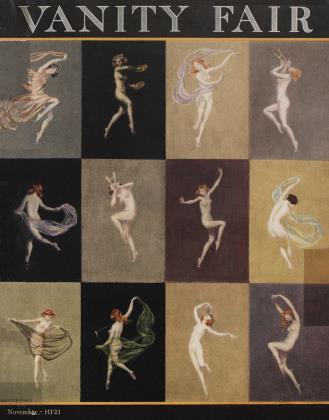Sign In to Your Account
Subscribers have complete access to the archive.
Sign In Not a Subscriber?Join NowPaintings by Marie Laurencin
Canvases Whose Delicate Faded Tints of Rose and Blue Evoke a Singularly Feminine Charm
THE ART OF MARIE LAURENCIN
THE art of Mlle. Marie Laurencin is distinctively feminine; female, one might almost say. Cubist among the cubists though she is, her paint, at a glance, reveals her sex. It is as though the feminine instinct for dress, for decoration, which generally is expressed only in the applied arts, had suddenly left its form of laces, ribbons, fans, decorations, hangings, and entered into the form of delicately brushed grays, lavenders and old roses. Her canvases have a tender, serpentine, almost coquettish grace. There is something beribboned and satiny in them. One thinks of a feminine Watteau in twentieth-century Paris; a painter of fetes gallantes turned to expressing the elegances and graces of his or, more correctly, her own day.
Much of what the woman is conscious of in her own person, and in the persons of other women, is expressed in Marie Laurencin's sweet harmonies of tints, her arabesque-like forms. She feels young girlhood as perhaps only women feel it; knows the shyness and curiosity of young girls; sees a little in their eyes what one sees in the eyes of the young deer who come and peer timidly and inquisitively at one through the bars of deer-preserves. The faun-like gestures of the fair, the sylph-like movements, the tormentingly attractive strangeness, the look of the wounded animal, is caught by her sinuous and delicate representations of young women. If one has any quarrel at all with her, it is that her colour-schemes at times are a little too saccharine, a little too evocative of the boudoir, the sachet-bag.
PAUL ROSENFELD
 View Full Issue
View Full Issue












Subscribers have complete access to the archive.
Sign In Not a Subscriber?Join Now